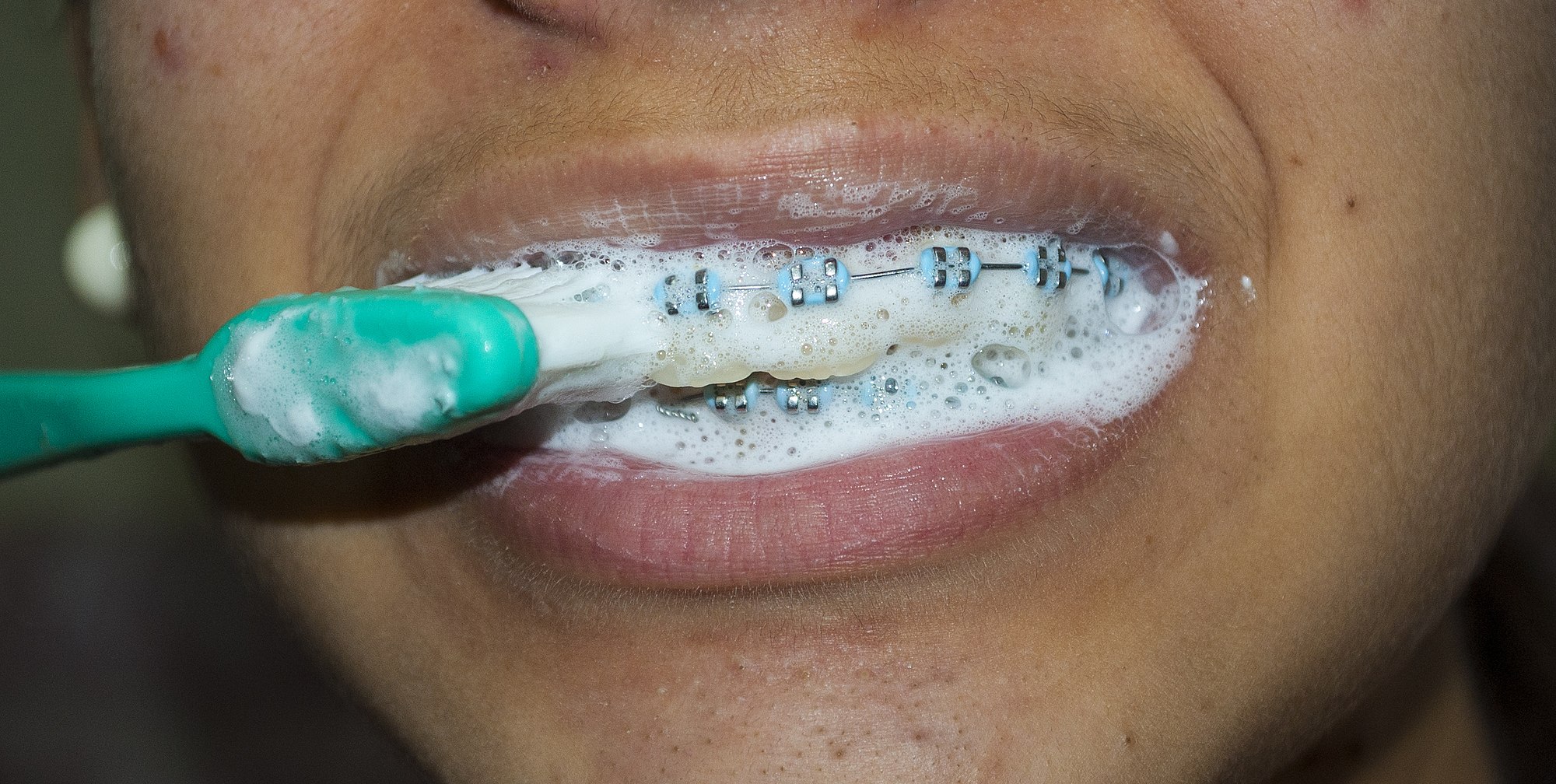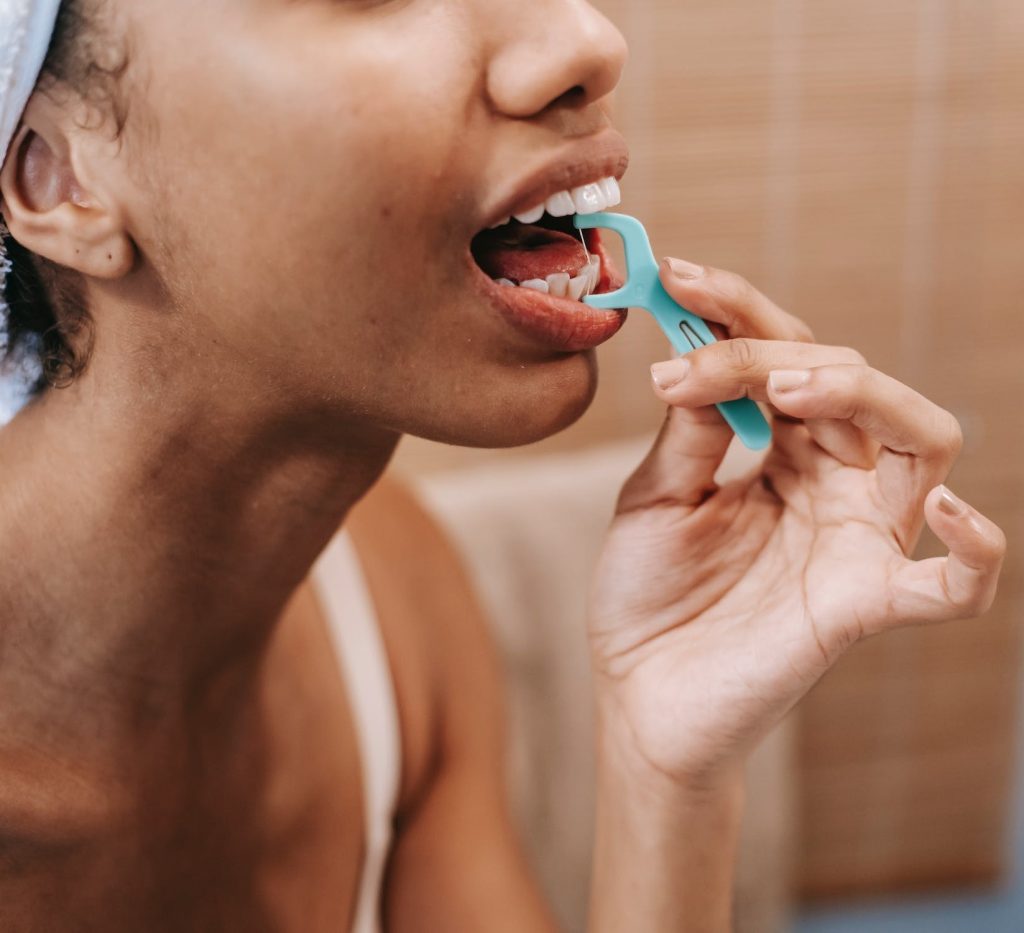When we talk about cleanliness, we often combine grooming habits with hygiene. Society dictates certain standards of personal grooming, such as combing hair or masking body odor, that we unconsciously absorb. These habits might contribute to health, but they might simply be the result of doing it the way you’ve always done it.
Hygiene, on the other hand, refers to grooming practices that contribute to health or prevent the spread of disease. Habits like regularly flossing and washing your face can help you to stay healthy.
Personal grooming is largely a matter of personal preference, but researchers have determined the ideal levels of cleanliness for best hygiene.
So, how clean should you be keeping everything above your neck?
Note: Grooming patterns, hygiene standards, and social expectations of cleanliness vary wildly around the world, but this blog will focus on America.
Wash Your Face
When it comes to cleanliness—to hygiene—one of the first activities that comes to mind is washing hands and faces.
In general, wash your face twice a day. According to Nazanin Saedi, MD, a board-certified dermatologist based in Philadelphia, “I tell patients that it’s important to wash your face in the morning and at the end of the day.”
Washing your face is an important tool to keep yourself healthy, especially during cold and flu season. In addition to removing dirt and sweat from your skin, proper face-washing removes germs that could spread illness. In particular, you can help stop the spread of airborne, respiratory infections (like Covid-19 and the common cold) by regularly washing off droplets from coughing and sneezing. Washing your face is particularly effective in removing allergens, bacteria, and viruses that spread through contact with mucous membranes (like pink eye).

If you’re not doing it frequently enough you might notice a buildup of skin cells and clogged pores, which could result in acne. How often you wash your face often depends on your skin type, your goals, and (to some extent), your environment. On average, you should be washing your face one to two times per day. But do we?
According to a recent study, 55 percent of people say they don’t cleanse their faces each day, a statistic that most dermatologists would shake their heads at. The study found that 48 percent of Americans don’t use cleanser when they do wash their faces—and almost half admit to using shampoo or conditioner or hand soap instead. Not only are people choosing the wrong products (a.k.a., ones that aren’t meant for facial skin), but many are also using the same washcloth up to four times before washing it. (For reference, experts say you should use a clean cloth every single time.)
Note: Splashing one’s face with water in the morning isn’t washing at all.
A 2017 survey showed that 60% of men don’t wash their faces at all. Most men, along with 48% of women, admitted to often skipping facial cleansing before bed.
Which Brings Us to Oral Hygiene
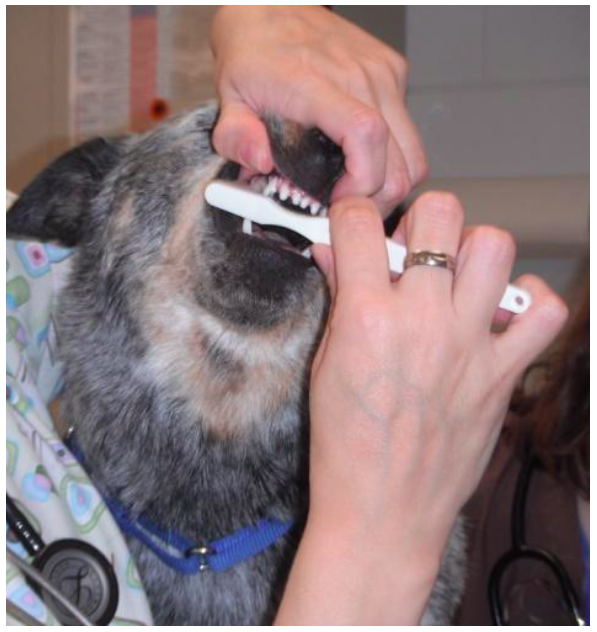
Good oral hygiene plays a surprisingly large role in maintaining overall health. It can help prevent endocarditis, periodontitis, and pneumonia. People with good oral hygiene habits have lower incidences of cardiovascular disease and fewer pregnancy complications.
The American Dental Association recommends brushing your teeth at least twice a day. However, fewer than 70% of Americans report meeting that standard. This means that more than 30% of Americans don’t brush enough.
Additionally, only 1 in 10 Americans brush their teeth correctly. Most people spend only about fifteen seconds per round of brushing. Studies have shown that you need a full two minutes of brushing to properly clean all tooth surfaces.
Frayed bristles can’t clean correctly, and even worse — they harbor all kinds of nasty germs. The American Dental Association suggests changing your toothbrush every three or four months.

Our modern standard of having perfectly white, even, straight teeth stems from black and white films. Because naturally-colored teeth showed up as gray on screen, many stars whitened their teeth or wore veneers. Ordinary people soon began to follow the fashion of bleaching and straightening their teeth for cosmetic reasons. Today, the American smile has become a $29.6 billion industry.
Electric toothbrushes may clean teeth and gums much better than a manual toothbrush. Either sort of toothbrush can be effective, though electric toothbrushes are easier to use effectively. People who use an electric toothbrush generally have healthier gums and less tooth decay. They also keep their teeth for longer, compared with those who use a manual toothbrush. But electric toothbrushes can be messy!
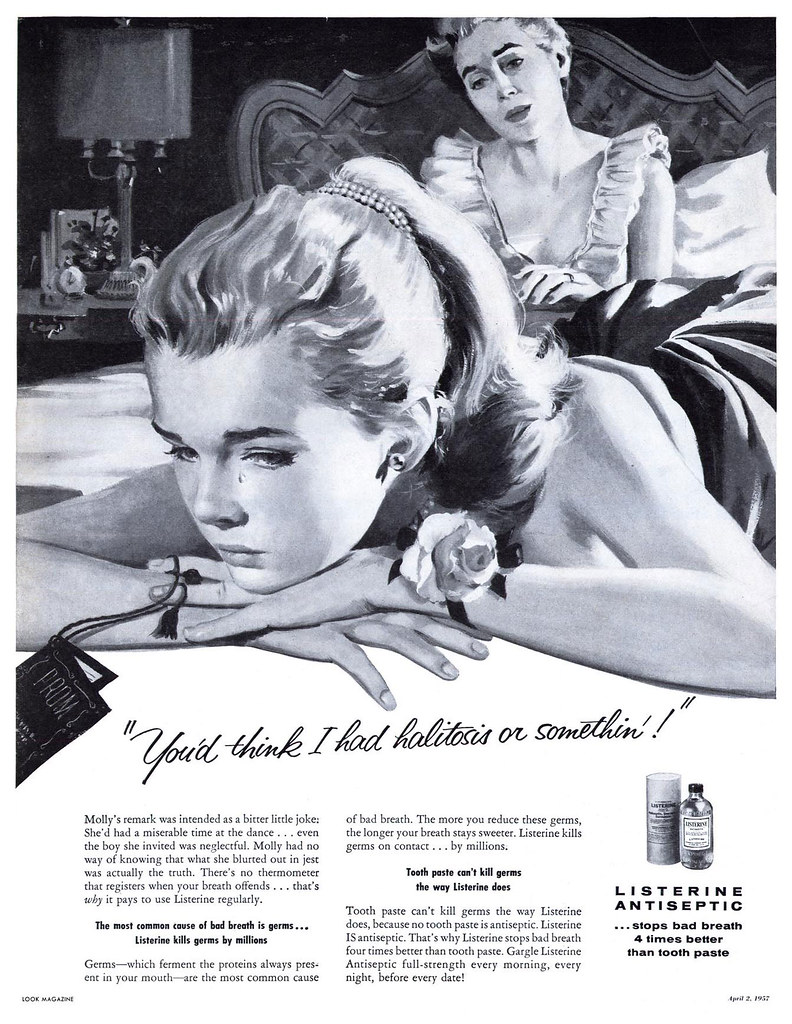
Listerine created the word “halitosis” as part of a marketing campaign to sell mouthwash. Humans have had bad breath for as long as we’ve had teeth, but a Listerine campaign in the 1920s turned it into a social problem. By gargling with Listerine, people could remove an invisible barrier to popularity, sex appeal, marriage, and career advancement. (Listerine also worked as a dandruff shampoo, cold remedy, and floor cleaner!)
Daily flossing prevents cavities and helps to keep our gums in good shape.
Surveys conducted by the American Dental Association have shown that less than 50 percent of adults in the U.S. floss on a daily basis. In fact, studies show that only 30% of Americans floss at least once a day.
The majority of adults, about 68%, reported flossing at least once weekly. A 2023 Delta Dental national public opinion poll of 1,003 adults found that 20% of Americans never floss. A report published in the Journal of Periodontology found that 32% of adults reported no flossing in the past week.
What About Hair Care?
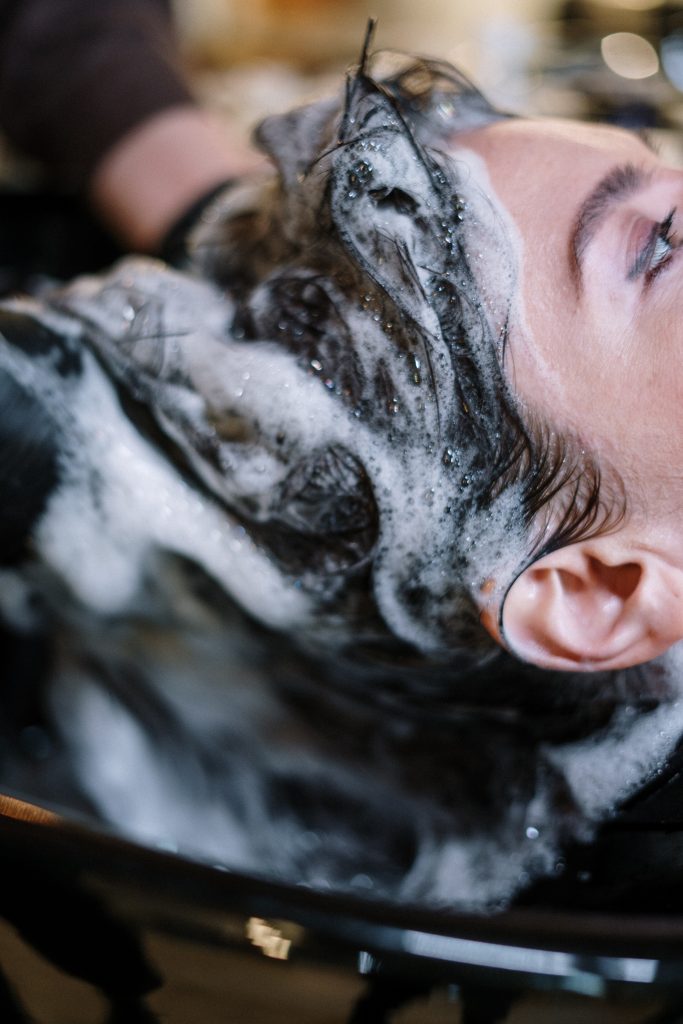
With the exception of treating certain conditions like head lice or ringworm, regular hair washing is not medically necessary. The scalp naturally produces sebum, an oil that protects against infection as well as moisturizing the skin. In fact, washing hair too frequently can strip the sebum from the scalp and cause itchiness and flaking.
Today, most people’s hair hygiene routine stems from social or cosmetic reasons rather than health concerns. A recent survey conducted by LookFantastic found that 49% of women polled reported washing their hair every day.
Carolyn Goh, MD, assistant clinical professor of medicine at the David Geffen School of Medicine at UCLA says, “There is no blanket recommendation. If hair is visibly oily, scalp is itching, or there’s flaking due to dirt,” those are signs it’s time to shampoo.
Hair texture plays a huge role in determining hygiene routines. People with thin or fine hair may need to wash more often. Those with thick, curly, or coiled hair might be more comfortable waiting longer between washes.
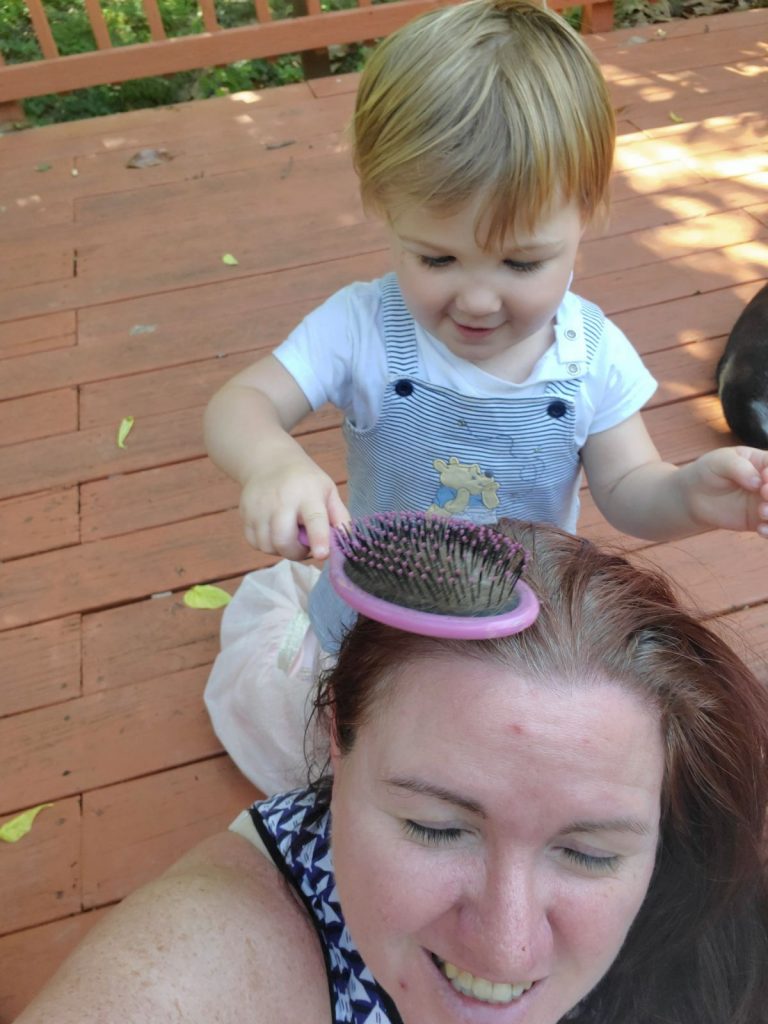
For the average person with straight hair, shampooing every other day, or every 2 to 3 days, is generally fine. Hair with a very straight texture is likely to start looking oily and limp faster, calling for more frequent washing.
People with curlier or wavier hair may be able to go longer between washing before their hair starts to look dirty. Some dermatologists recommend washing hair no more than once a week or even every other week. This will help prevent build-up of hair care products, which can be drying to the hair.
The scalp can produce varying levels of sebum, which also affects how often hair needs to be washed. Washing too often can cause the scalp to overproduce oil as well as upsetting the pH balance of the microbiome on the skin. According to dermatologist Blair Murphy-Rose, MD, “Too frequent washing of the scalp with harsh cleansers can upset that microbiome, and an imbalance in the microbiome can lead to scalp problems.”
And Last But Not Least: Facial Hair
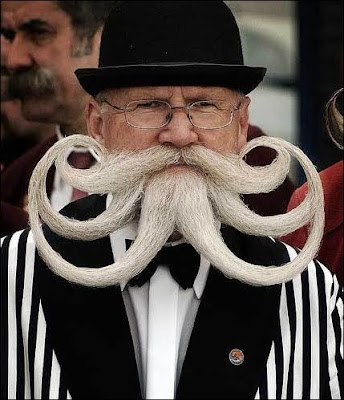
Like washing the hair on your head, shaving the hair on your face generally serves no medical purpose. However, the presence or lack of facial hair is highly important to a sense of self-identity and social acceptance. Grooming or removing facial hair is an integral part to many people’s hygiene routines.
Having hair and not wanting it leads many people to bleach, shave, or wax to remove or disguise hair temporarily. Laser hair removal or electrolysis treatments kill hair cells below the skin surface for permanent hair removal.
Facial shaving in women is more common than you might think. It’s done to remove vellus and terminal hairs from the cheeks, chin, upper lip, and side burn areas. Facial shaving also provides mechanical exfoliation, which can help skin look brighter and cleaner.
Many women wax their chins or upper lips to remove unwanted facial hair. Using warm or cool wax to pull hairs out by the roots gives a longer-lasting smoothness, but the risk of side effects is higher. People have reported pain, rashes, sun sensitivity, or even scarring after facial waxing.
Rather than removing unwanted facial hair, some people choose simply to bleach it. Lightening hair follicles reduces the appearance of facial hair but leaves it in place. Though generally easier and cheaper than waxing, bleaching hair still runs the risk of irritating skin.
Three out of four American women ages 18 to 34 have had facial hair removed or done it themselves in the last year. Most common removal locations are eyebrows (58 percent), upper lip (41 percent) and chin (21 percent), according to a 2014 survey by Mintel, which did not track removal methods.
How often a woman shaves her face is usually down to genetics and personal preferences. In general, the recommendation is that women shave their faces every 2-3 days if they like a clean shave and every 3-5 days if they’re just looking to style or trim.
A 2019 survey showed that more men [35%] than women [6%] shaved once or more daily (though razors marketed to women cost more).
The presence or absence of facial hair serves as strong indicator of gender in our society. For many transgender people, transitioning begins with the daily application or removal of facial hair. Hormone therapy can eventually help people to grow or stop growing facial hair on their own. Transgender women report laser hair removal as the most common form of facial procedure. Transgender men may turn to hair transplants to fill in hairlines and eyebrows as well as beards and moustaches.
Some cisgender men also use hair transplants to achieve their desired facial hair. Doctors move strips of hair or individual hair follicles from the back of a patient’s head to the jaw, cheek, or upper lip. Because this is such an expensive procedure, many medical tourists travel to Turkey for hair transplants.
During a June 2017 survey, 29 percent of men reported trimming or shaving their beard every day.
Bottom Line: Too clean or not clean enough? YES!
